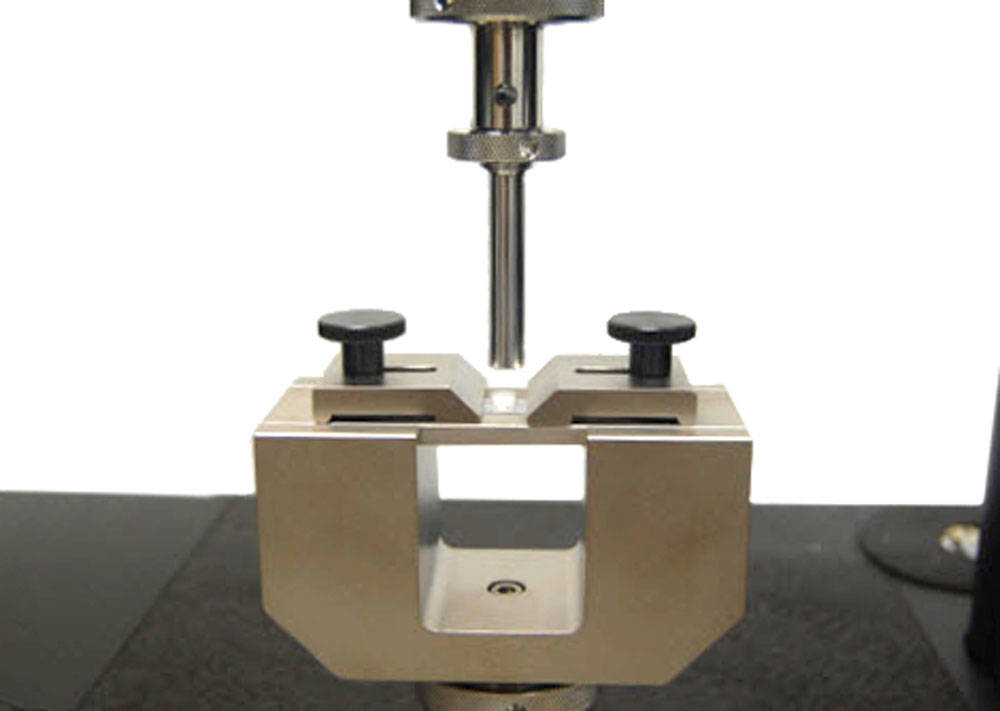Pharmaceutical tablets and capsules are commonly packaged in blister packs that protect the enclosed tablets and capsules from moisture and contamination. This optimizes the product stability and maximizes its shelf life. The two primary components of a blister pack are the rows of cavities, typically made of thermoplastic, and the lidding seals that can be made of paperboard, aluminum, or plastic. However, in pharmaceutical packages, aluminum foil is most frequently used. It is important for manufacturers to ensure that the blister pack does not break too easily, yet it needs to be brittle enough to allow consumers to break by hand in order to dispense the tablets or capsules. Many pharmaceutical companies utilize a variety of blister pack sizes to accommodate various pill diameters, which poses a challenge for testing.
Our SolutionIn order to measure the force required to push a tablet through the blister pack, we created a custom solution that clamps the blister pack from top-down with easy to use adjustable clamps and spacer plates that can accommodate a range of blister pack sizes and tablet diameters. Using this custom clamp and a standard flat tipped probe, tablets can be pushed top-down, pushing the probe through the foil in order to measure maximum force. From these results, it can be determined whether the lidding material on a blister pack is too stiff, or if the adhesive strength between the lidding and plastic cavity is too strong or weak.

